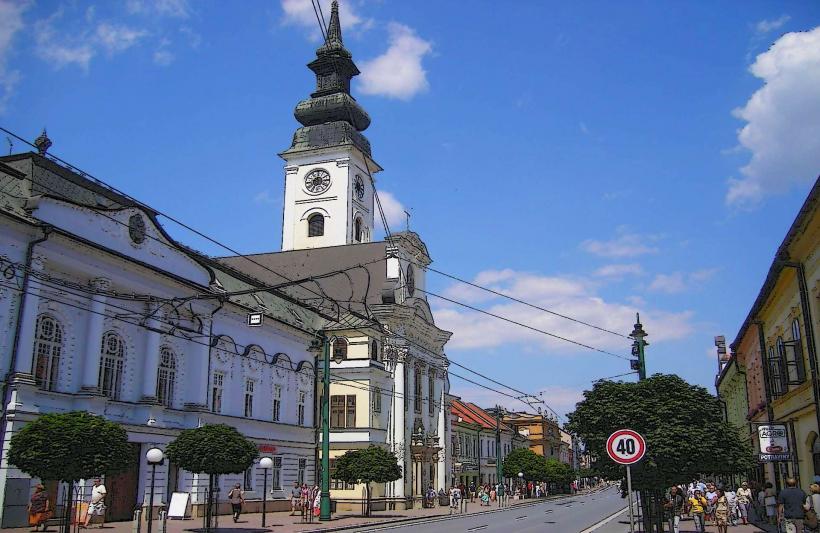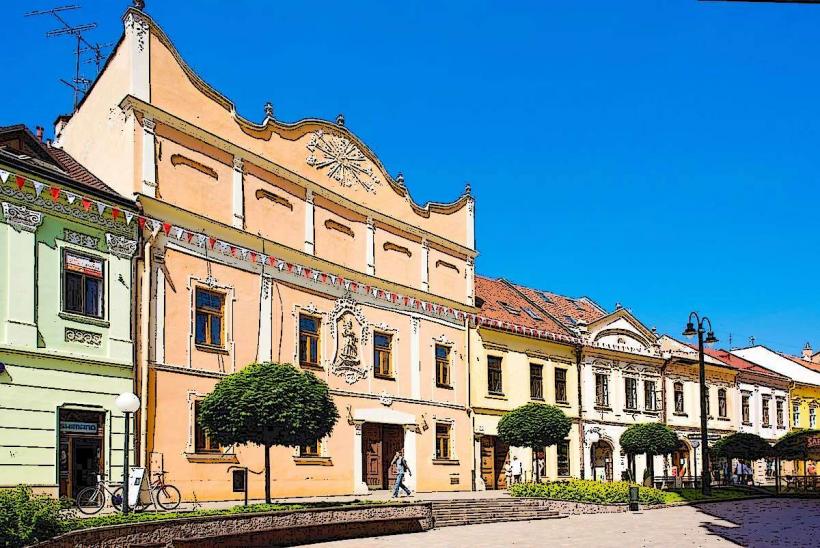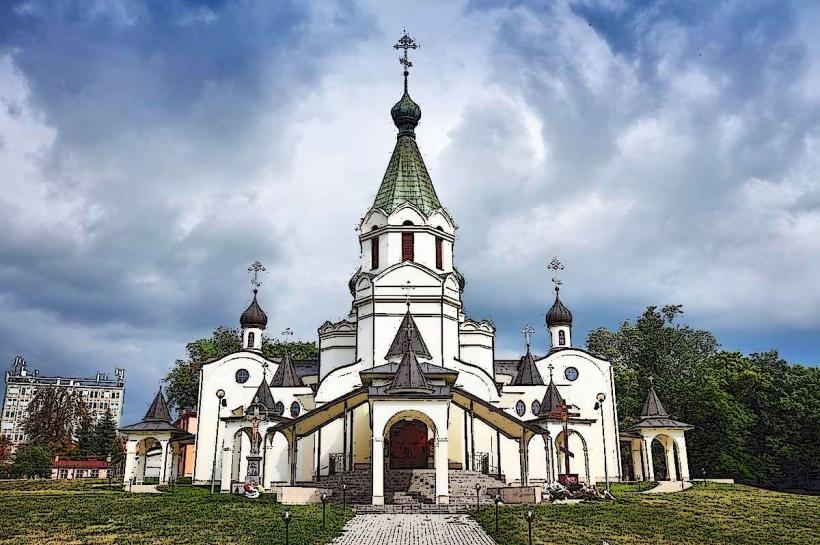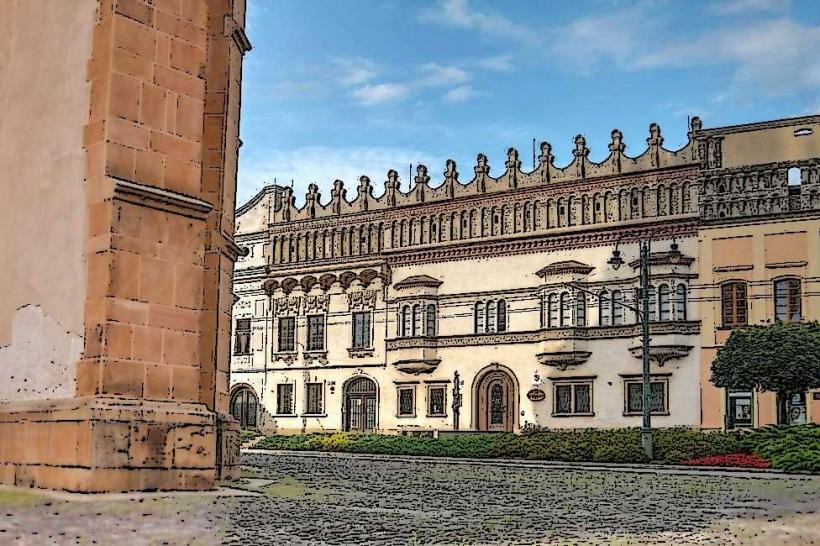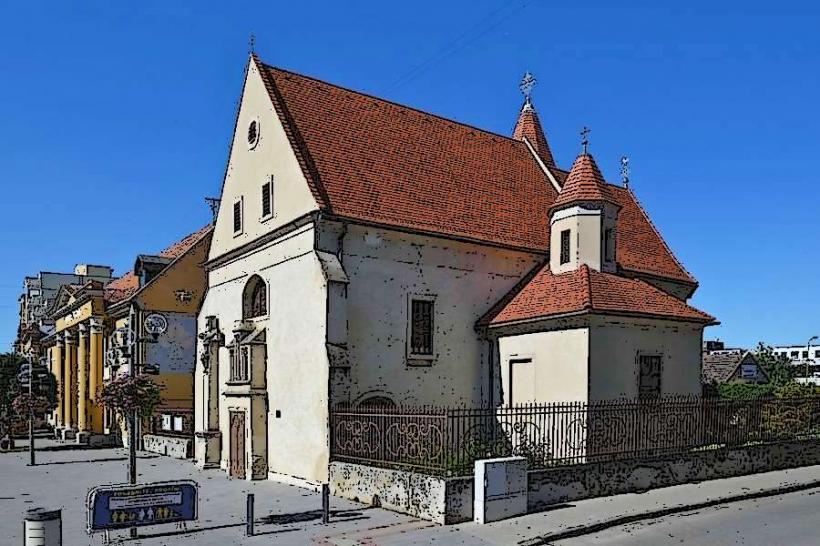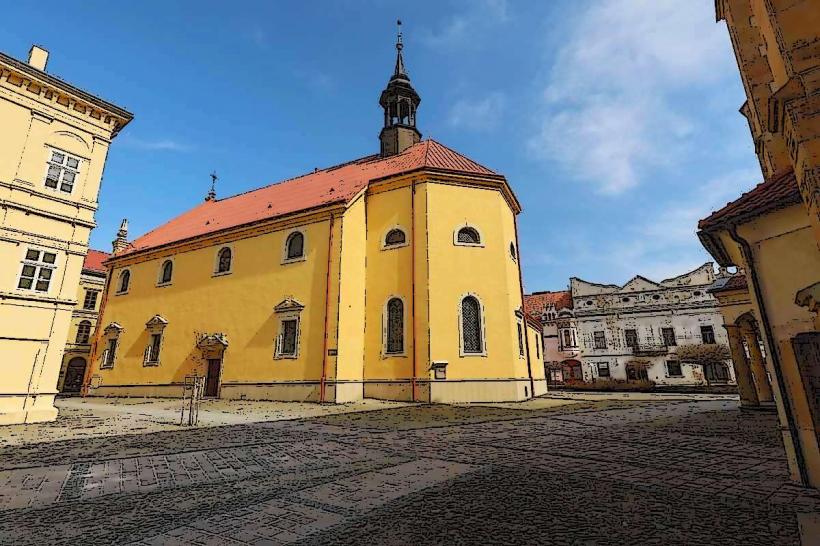Information
Landmark: Museum of the Zemplín RegionCity: Presov
Country: Slovakia
Continent: Europe
Museum of the Zemplín Region
Slovak Name: Múzeum Zemplínskeho regiónu
The Museum of the Zemplín Region is located in Trebišov, Slovakia, and serves as a key institution for preserving the cultural heritage, history, and traditions of the Zemplín region, an area rich in history, folklore, and diverse cultures. The museum is a vital part of the community’s effort to document and share the region’s past, from its prehistoric roots to its more recent cultural developments.
General Information
- Location: Trebišov, Zemplín Region, Slovakia
- Establishment: The museum was established in 1971.
- Focus: The museum's primary goal is to preserve and present the cultural and historical heritage of the Zemplín region.
- Key Exhibits: The museum showcases a wide array of exhibits covering archaeology, ethnography, art, and the historical development of the region, as well as the lives of its inhabitants.
Historical Background
Foundation and Purpose:
- The Museum of the Zemplín Region was founded in 1971 with the mission of preserving the region’s rich cultural legacy and offering a space for the public to engage with Zemplín’s history.
- The museum was established in response to the increasing interest in the region's archaeological finds and the need to document its ethnographic and historical aspects. It serves not only as a repository of artifacts but also as a research center focused on local history.
Cultural and Historical Significance:
- The Zemplín region, located in the eastern part of Slovakia, has been inhabited for centuries, and its history is shaped by a mix of Slavic, Hungarian, and Jewish influences, among others.
- The region’s medieval castles, churches, and folklore traditions are key elements explored in the museum’s exhibits.
Expanding Collections:
- The museum’s collections have grown over the years and now include a wide range of archaeological artifacts, ethnographic collections, historical documents, and local artwork. The museum has also expanded its focus to include modern history, showcasing the development of the region in the 20th century.
Key Exhibits and Collections
Archaeology:
- The museum displays a wide range of archaeological artifacts that trace the region’s prehistoric, Roman, and medieval past. These include stone tools, pottery, coins, and weapons uncovered from excavations in the Zemplín area.
- Special focus is given to the Celtic, Roman, and Slavic periods of settlement in the region, highlighting its strategic importance throughout history.
Ethnography:
- The ethnographic exhibits focus on the traditional way of life in the Zemplín region, showcasing items related to folk architecture, costumes, craftsmanship, and daily life.
- The museum includes displays on traditional agriculture, textile production, and the tools and customs of local people, reflecting the agricultural heritage of the region.
Art and History:
- The museum’s art collection features works from local artists, including paintings, sculptures, and folk art, which capture the cultural and social life of the region.
- Historical exhibits focus on the development of the region, its administrative history, and the impact of major historical events, including World War I, World War II, and the Hungarian Revolution.
Jewish Heritage:
- The museum also highlights the significant Jewish community that once thrived in the Zemplín region, particularly in towns like Trebišov. Exhibits focus on the Jewish lifestyle, religious practices, and the impact of the Holocaust on local Jewish populations.
Natural History:
- The museum has a section dedicated to the natural history of the Zemplín region, featuring exhibits on local flora and fauna, as well as geological materials from the region. Fossils, minerals, and rocks are displayed alongside information about the environmental history of the area.
Visitor Experience
Educational Programs and Events:
- The museum hosts a variety of educational programs designed for both schoolchildren and the general public. These programs include workshops, lectures, and guided tours that allow visitors to learn about the cultural history of the region in a more interactive and engaging way.
- The museum often holds temporary exhibitions, which highlight specific aspects of the region’s history, art, or culture, and may include collaborations with other institutions.
Exhibition Spaces:
- The museum is divided into several sections, each dedicated to a different aspect of the Zemplín region’s heritage. Visitors can explore the permanent exhibits that focus on various historical periods and themes, as well as temporary displays that rotate throughout the year.
Facilities:
- The museum has facilities such as gift shops offering books, educational materials, and locally-made souvenirs.
- Restrooms and seating areas are also available for the comfort of visitors.
Guided Tours:
- Visitors can choose to explore the museum independently or opt for a guided tour that provides additional context and insights into the exhibits. The museum’s staff is knowledgeable and passionate about the history of the region and can offer in-depth explanations of the artifacts.
Visitor Information
Accessibility:
- The museum is centrally located in Trebišov, easily accessible by public transport or car from other parts of the city.
Opening Hours:
- The museum is typically open during the weekdays and on weekends, with extended hours during special events or exhibitions. It’s advisable to check the official website or contact the museum for up-to-date opening hours.
Admission Fees:
- The museum generally charges an admission fee, with discounts available for students, seniors, and group visits.
- Special fees may apply for guided tours or temporary exhibitions.
Facilities:
- The museum has restrooms, a gift shop, and educational resources for those looking to learn more about the region's history.
Nearby Attractions
- Trebišov Castle: A historical site in the area with a rich medieval history, including exhibitions on the local nobility.
- Zemplín Forest: The region is known for its natural beauty, and visitors can explore the nearby forests and hills.
- Trebišov Town Center: A charming area with Renaissance and Baroque buildings, including St. Elizabeth Church and other historical sites.
Significance
The Museum of the Zemplín Region is a crucial institution in preserving and presenting the history and culture of the Zemplín region. It offers visitors a detailed look into the historical development, ethnographic traditions, and natural heritage of one of Slovakia’s most culturally diverse areas. By preserving and showcasing the artifacts of the past, the museum plays an essential role in educating the public and fostering a deeper understanding of the region’s rich cultural identity.


